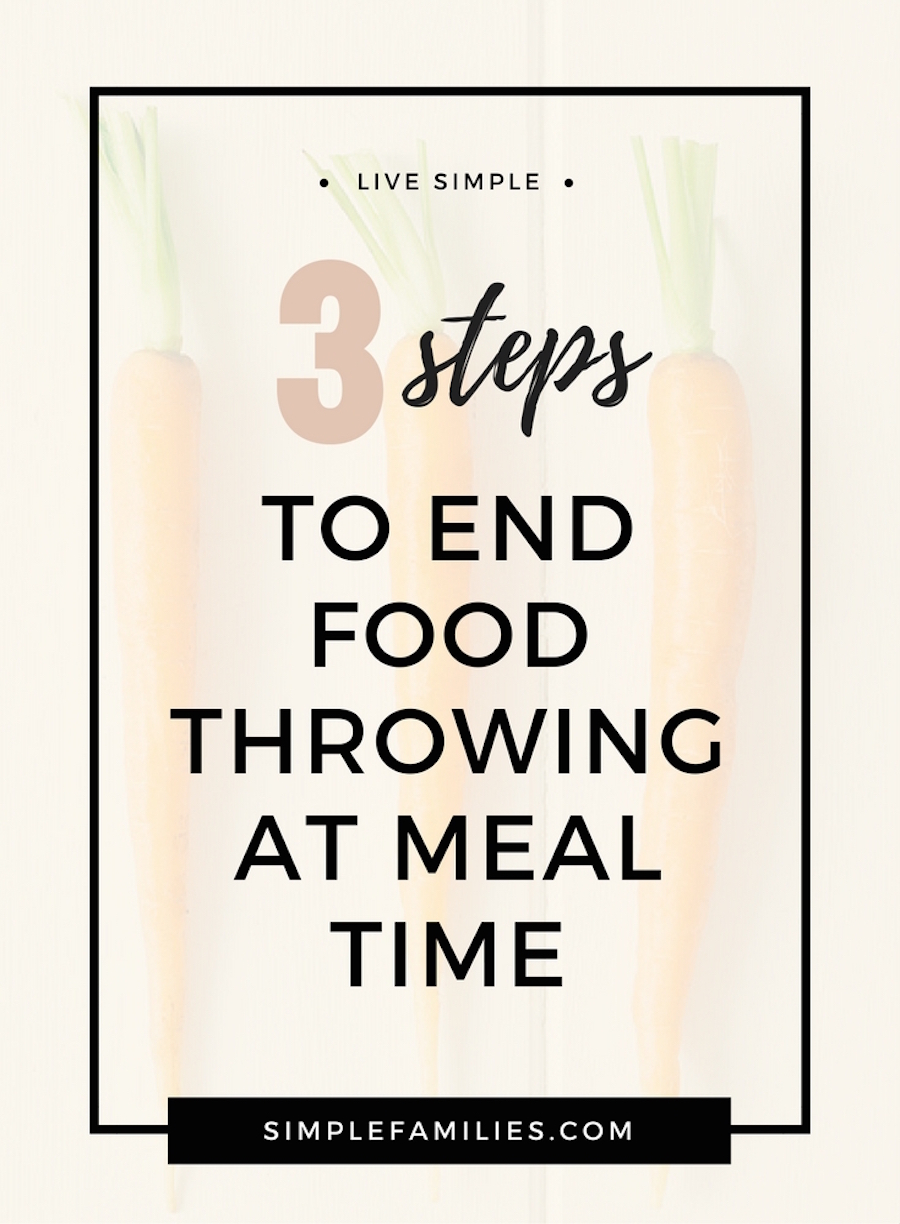
We all know that accidents happen. However, food throwing and playing at mealtime doesn’t need to happen. When an 8-month-old starts feeding crackers to the dog and finger painting all over the table with yogurt, it’s kind of cute. When a 2-year-old does it, it is just plain frustrating—maybe borderline annoying.
At what point does a behavior go from cute to annoying?
This grey area of “cute-turns-annoying” can be very confusing to a young child. Think about it: What was once permitted and even considered “sweet” to his parents is now evoking aggravation.
That’s why we have a zero-tolerance policy for throwing and playing with food.
So what gives?
Kids do not need to play with their food.
There is a myth floating around the universe about playing with food. I will point the blame finger towards the Occupation Therapy community for this one (sorry, you do great work folks, but we disagree here). Kids who have feeding disorders and undergo feeding therapy (less than 5% of the population) may need to play with their food to get familiar.
But the rest of the world, does not. What kids do need to do is self-feed, which sometimes gets a little messy. I am a big fan of allowing children to feed themselves starting at 6 months of age. However, there is a big difference between self-feeding yogurt and getting messy while eating and allowing children to fingerpaint with yogurt on the table after they are done eating.
There is not a one-size-fits all approach to dealing with this challenge. But there is a three-size-fits all approach.
First you need to pinpoint which of these three factors is driving the behavior: (1) you served an unwanted food, (2) the child is done with mealtime, or (3) it’s a cry for attention.
What’s causing the behavior?
Once you know what’s driving the behavior, here are your steps for action with babies and toddlers:
1. The food served is unwanted.
Playing with unwanted food is a common challenge. In this approach, your actions will speak louder than words. Avoid extensive explanations and verbal “threats” about throwing and playing–stick to this script. Here is the three-step approach to handle it.
- When the playing or throwing starts give one gentle directive such as, “the food goes into your mouth”. Avoid saying things like “no throwing, don’t do that, or stop”. If we tell young children what not to do, they still don’t know what they are supposed to be doing. Therefore, instructions should be positively phrased and directive in nature.
- If one gentle directive doesn’t work, move directly to step 2. Take the food and place it in the middle of the dinner table for 30 seconds without saying anything. After 30 seconds give the food back and repeat the original reminder “the food goes in your mouth”.
- When you return the food, stay close. If there is an attempt to throw again, prompt the baby to “pass me” the unwanted food and put your hand out to take it as soon as he makes an attempt to throw it. This is giving him an opportunity to dispose of the unwanted food appropriately rather than throwing or smearing it. If this doesn’t work you are probably dealing with the next issue–the child is actually done with mealtime. Therefore at this point the meal is then over. I encourage you not to be punitive or negative, just quietly take the child down from the chair.
2. The child is done with mealtime.
Sometimes throwing food can be a sign a child is done with the meal and they haven’t yet learned an appropriate way to communicate this message. If this happens, try to teach your child a positive way to signal when they are done. Taking their bib off or using sign language to say “all done” are both great, easy ways to communicate this. We must give them an alternative way to communicate “done” rather than throwing and playing.
3. It’s a cry for attention.
Do you ever find yourself on your phone when your little one is eating? I know I do during long leisurely lunches. Sometimes the kiddos start to bang the spoon around, drop food on the floor, or make other fun messes. Usually this is their way of snapping me out of my “zone”. Does he need a little extra help with the spoon and fork? Or maybe just some friendly conversation? Eating is a social event and children deserve interaction during meals.
Making a mess during meal time should be an exception, rather than an expectation. Consistent set your goals and standards high and you will see positive results. Consistency is key, make a plan and stick with it to see results. 
Written by Denaye of Simple Families.
